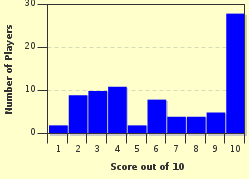Quiz Answer Key and Fun Facts
1. Which woman correspondent immigrated to the U.S. from Eastern Europe at the age of seven after WWII and became an American war correspondent during the Vietnam War?
2. Which correspondent was born into privilege, descended from both the B.F. Goodrich family and that of the former Vice President to James Buchanan?
3. Which woman did NOT serve as a war correspondent during the Vietnam War?
4. Who was the first woman war correspondent to win a Pulitzer for International Reporting?
5. Which photo-journalist began her career as the first female photo-journalist for "Life" magazine, was one of the first western journalists to be permitted inside the Soviet Union in 1930, and recorded the events of WWII and the Korean War?
6. What female war correspondent worked with Ernest Hemingway during the Spanish Civil War, became his third wife, and covered wars around the globe for six decades?
7. When Edward R. Murrow put together his team for the radio broadcasts from Europe shortly before the beginning of WWII, he hired a few good women as broadcasters and reporters. Which of the following was NOT among the original "Murrow Boys?"
8. What female reporter was denied access to Franklin D. Roosevelt's press conferences, but made a personal appeal to Eleanor Roosevelt who then began conducting her own weekly press conferences for women reporters?
9. Who was the first woman to be accredited as a War Coresspondent by the U.S. Department of War?
10. Which journalist, playwright and author was born the illegitmate daughter of a dancer and violinist, but would report from battlefronts across Europe, Africa, and the Far East during WWII, become a staunch anti-Communist, member of Congress, and Ambassador to Italy?
Source: Author
drushalli
This quiz was reviewed by FunTrivia editor
bloomsby before going online.
Any errors found in FunTrivia content are routinely corrected through our feedback system.


